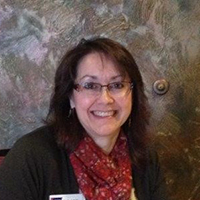Patient navigation in the cancer care setting refers to individualized assistance offered to patients, families, and caregivers to help overcome healthcare system barriers and facilitate timely access to quality health and psychosocial care from prediagnosis through all phases of the cancer experience.1
There is an important distinction between the concept of “require” and “benefit from.” We are confident that most of us working within the field of patient navigation would advocate that all cancer patients (and most patients in today’s complex system of healthcare delivery) would benefit in some manner from having a clinical or nonclinical patient navigator help them move through the sometimes “maze” of medical and resource systems designed to help patients after a cancer diagnosis. Determining which patients “require” navigation is often based on the capacity and patient population of the individual setting. Until there is resolution around many issues, each institution makes the decision that is best for its situation.
It is easy to identify those patients and populations who potentially will have more challenges completing treatment. Sometimes the factors are related to diagnosis, such as rare or unusual diagnoses, particularly harsh treatment regimes, or co-occurring major illness or diagnosis. Other groups include patients who are distrustful of the medical community due to past experiences, mental illness, addiction, or fear of stigma. Factors including income, age, insurance status, and language barriers all require extra resources and time to successfully move these patients along the care continuum.
There is ample evidence that insurance status and income potentially impact treatment options and patient compliance. Following is some information from the AONN+ Midyear financial navigation preconference workshop:
- 42% of insured cancer patients express a significant or catastrophic financial burden2
- A survey of breast cancer patients found that 94% of this population wanted to discuss cost of treatment, but only 14% reported having that conversation3
- An estimated 42% of patients aged 50 years or older diagnosed with cancer depleted their entire life’s assets4
- The average dollar contribution for family coverage has increased 21% between 2013 and 2017 and 65% since 20085
These dismal facts illuminate how being connected to a financial counselor, financial navigator, or financial advocate can be beneficial. A patient navigator can help ensure patients are connected to available resources whether within or outside the medical setting.
Those for whom English is not their first language or who are not fluent English speakers, those with hearing loss, those with cognitive limitations or changes may have more difficulty understanding their diagnosis, treatment plans, medication regimens, and when to reach out to providers or other resources between appointments. A lack of understanding on setting next appointments or check-in procedures can lead to unintended delays. A patient navigator can arrange for translation services, assist in checking for understanding by using teach-back techniques, create action plans, or plan interim follow-up calls to identify issues and ensure that next steps occurred.
Many patient navigators are involved in access to care issues, with transportation being a major barrier to treatment completion. Access to care is a tremendous issue for cancer patients, especially those needing chemotherapy or radiation treatment requiring multiple or even daily trips over several weeks or months. Patients may have difficulty finding reliable transportation for several reasons. In the American Cancer Society (ACS) Patient Navigator Program Multi-Site Cancer Study, transportation was noted as a common barrier to cancer care that resulted from “not having access to a working car, high cost of gas, lacking funds for taxis and public transportation, lacking a driver’s license, and/or distance from treatment facility.”6 Assessing for patients’ ability to secure transportation or lodging, if more appropriate, is important to ensure they can select the treatment that is best for them and successfully complete their treatment on time.
A skilled patient navigator will be able to help patients with varying degrees of support, most often based on the needs revealed during the navigator’s assessment of the patient or from referral from other medical professionals who are striving to work with the patient to achieve the most positive medical outcome. Best practices include being aware of the reading level of patient education materials used in the facility, selecting lower reading level materials for basic education, and adding higher reading level materials based on patient need. The ACS basic education pieces are written at a 5th-grade level, and all materials have reading level noted. Simple changes in choice of words can also be helpful to ensure understanding. Asking patients, “What questions do you have?” rather than, “Do you have any questions?” is a simple change that helps to normalize the questions and uncertainty that most patients have.
Another area addressed by navigation includes health literacy, or being familiar with the healthcare setting literacy.
- Although any patient and family may find they are in need of navigation, they may not understand their cancer, diagnosis, terminology, and what a cancer diagnosis means for them; 77 million adults have basic or below basic health literacy7
A navigator can help find information that is written in a patient’s native language, or with more pictures than text, or highly complex and advanced materials. Being able to briefly assess learning style and find the most appropriate educational materials is vital. Patients may also need to “learn” the process for prescription refills, appointment setting, or requesting/scheduling transportation. Navigators can act to support completion of the “simple” tasks that can lead to a patient dropping out of care. Often, there are a multitude of specialists involved in complex care, especially with comorbidities.
To support the need of identification of patients who need/would benefit from navigation, the National Navigation Roundtable has 3 active workgroups (training and certification, evidence-based promising practice, and policy) being addressed.8 The presence or absence of navigators has been used as a marketing tool, and if patients are able to choose their facility, this may factor into their decision-making about where to get care.
Differences Around a Disease Site–Specific Navigation and a Multisite-Specific Navigation Site
Benefits from specific disease sites and multidisease sites can be applied, both dependent on the needs of the patient population that is being assisted.
Cancer Site–Specific Navigation
An overarching benefit of disease site–specific navigation focuses on the in-depth knowledge the cancer site–specific navigator would have, and that would be utilized to support the specific type of diagnosis. If a clinical or nonclinical navigator has a specific focus, they will likely have more knowledge than a more generalized role. Benefits include detailed knowledge of the specific cancer and treatments and their impact on the patient’s health, finances, family, etc.
The specialist also would have detailed knowledge of resources available and which would be most beneficial under the circumstances, as well as an awareness of the gaps in resources. This would result in quickly being able to match resources to needs and make available to the patient and caregivers the most meaningful resources and possibly overcome the cancer-related barriers, resulting in the best navigation experience possible.
A staff dedicated to identifying patients’ needs early in the treatment process and providing needed support and information to meet those needs can improve treatment adherence, quality of life, and cancer survival rates.
A site-specific model is dependent on the medical setting having significant patient volume to justify the role.
Multisite Cancer Navigation
Multisite navigation has proved to be an effective method for ACS nonclinical patient navigators to support health systems and their patients. The target population is the newly diagnosed and underserved. ACS patient navigators seek to serve those who are uninsured, on Medicaid, or otherwise vulnerable. It has been the experience of the ACS that at least 30% of most health systems’ cancer patients benefit from nonclinical navigation, and this percentage can increase substantially in health systems that serve underserved populations, such as safety net hospitals. In many programs, they are integrated into a multidisciplinary team that includes nurse navigators and social workers, along with other supportive care team members.
Patients being navigated by patient navigators/medical staff who have a strong general knowledge of all cancer types enables the support of patients experiencing various types of cancer by supplying resources that fulfill many different needs.
The patient navigator helps patients with resources that help to improve quality of life. This may include seeking lodging or transportation to alleviate daily drives to treatment, allowing patients more time to rest and saving gas money and wear and tear on a vehicle.
Patient navigators can help patients access resources available in the health system that they may not have been aware of or have difficulty accessing. These can include staff dedicated to medication assistance, hospital discounts, insurance specialists, and the many patient offerings such as support groups or classes focused on nutrition, exercise, or smoking cessation.
A patient navigator may help increase patient engagement and activation and empowers patients to take an active part in their care and feel confident doing so.
With the aging of the US population and the growing cost and complexity of healthcare, it is clear that patients will continue to need support to complete treatment. Both multisite or site-specific patient navigation models on oncology can address patient needs and improve quality of life. The key is that patient navigators be well integrated into the system as well as having a broad awareness of external resources. If a system has site-specific navigation, a plan should be developed to support those not falling within those diseases.
References
- Oncology Nursing Society, Association of Oncology Social Work, and the National Association of Social Workers joint position on the role of oncology nursing and oncology social work in patient navigation. Oncol Nurs Forum. 2010;37:251-252.
- Zafar SY, Peppercorn JM, Schrag D, et al. The financial toxicity of cancer treatment: a pilot study assessing out-of-pocket expenses and the insured cancer patient’s experience. Oncologist. 2013;18:381-390.
- Irwin B, Kimmick G, Altomare I, et al. Patient experience and attitudes toward addressing the cost of breast cancer care. Oncologist. 2014;19:1135-1140.
- Gilligan AM, Alberts DS, Roe DJ, Skrepnek GH. Death or debt? National estimates of financial toxicity in persons with newly-diagnosed cancer. Am J Med. 2018;131:1187-1199.e5.
- Kaiser Family Foundation. 2018 Employer Health Benefits Survey. www.kff.org/report-section/2018-employer-health-benefits-survey-summary-of-findings.
- NOVA Research Company for the American Cancer Society. Patient Navigator Program (PNP) Multi-Site Case Study Report. August 13, 2008. Revised September 15, 2008.
- US Department of Health & Human Services. America’s Health Literacy: Why We Need Accessible Health Information. https://health.gov/communication/literacy/issuebrief/#survey.
- National Navigation Roundtable. www.navigationroundtable.org.





